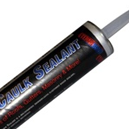Advantages of Using Insulating Foam Sealant
- 10 March 2016
- Posted by: Madhuraka
- Category: Article
 On speeding past the carefully listed features of an insulating product, we miss out on the multiple attributes of the material, perhaps even condemning the product with binary-like qualities. The word insulating is then wrongly interpreted as stopping heat from escaping or preventing sound from travelling, but a multipurpose insulating foam sealant provides an inviolable barrier that stops both heat and sound, thus drastically reducing energy losses across the board.
On speeding past the carefully listed features of an insulating product, we miss out on the multiple attributes of the material, perhaps even condemning the product with binary-like qualities. The word insulating is then wrongly interpreted as stopping heat from escaping or preventing sound from travelling, but a multipurpose insulating foam sealant provides an inviolable barrier that stops both heat and sound, thus drastically reducing energy losses across the board.
The advantages of fitting this versatile foam alongside a heating or cooling solution include being able to install a smaller air conditioning system, one that eats less electrical energy. Losses are predicted to be low, so why not install boxes and ducts that assume a smaller profile? Space is saved in the walls, construction costs are reduced, and we see an overall trend where energy consuming appliances and their extraneous parts shrink in size. Insulating foam sealant makes this all possible, but, again, we’re speaking from a perspective where new appliances are being installed or retrofitted on top of existing fixtures.
Alongside the factors already covered, the attenuation of loud sounds, the stoppage of heat loss and dramatic reduction of vibrations, we need to touch on the lesser known properties of the product. The foam creates a seal, of course, but it also expands and reaches places no other material can reach. Eccentric contours are covered. Unreachable wall voids are coated, ending the possibility of a heat trap or nasty sound amplification zone. The foam conforms to all of these weirdly shaped wall spaces without compromising the closed-cell structure of the form, and it does so while forming a permanent airtight seal, one that isn’t tacky or sticky. This means it’s easy to apply and easier to work with. It leaves no messy aftermath and is easy to clean up afterwards, meaning the work area is quickly transformed back into a habitable space, which keeps occupants happy. Every occupant of the home or office is then guaranteed to be warm and free from the sound produced by noisy neighbours.
There are barrel loads of sealing products that promise noise reduction and heat protection, but most of them lose out in the end because their application methods are substandard. In fact, no matter how superior a chemical sealant actually is, it will always lose out in this fashion because it isn’t filling its role properly. Insulating foam sealant sidesteps this issue, arriving in the most inaccessible energy draining spots to expand and create a fully airtight seal.

